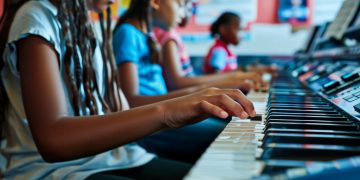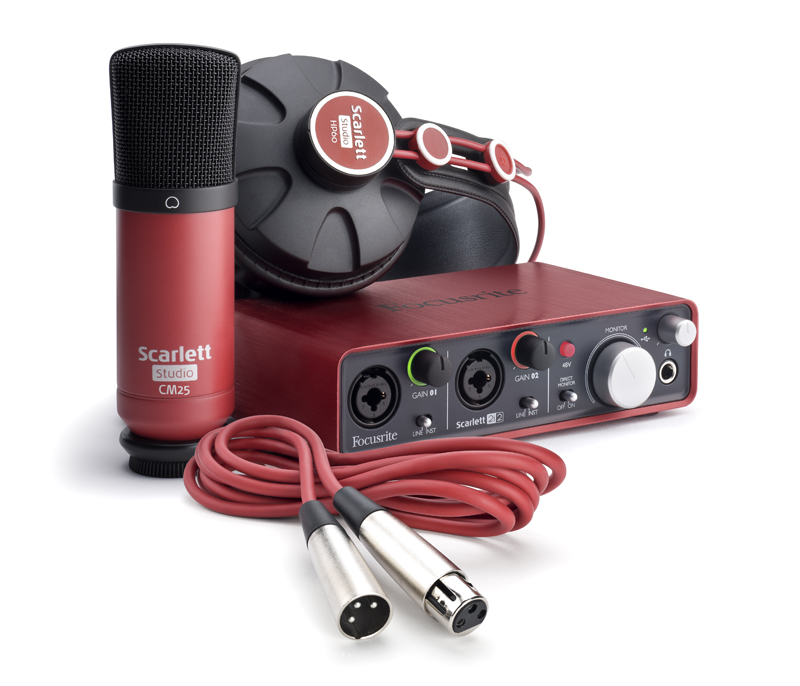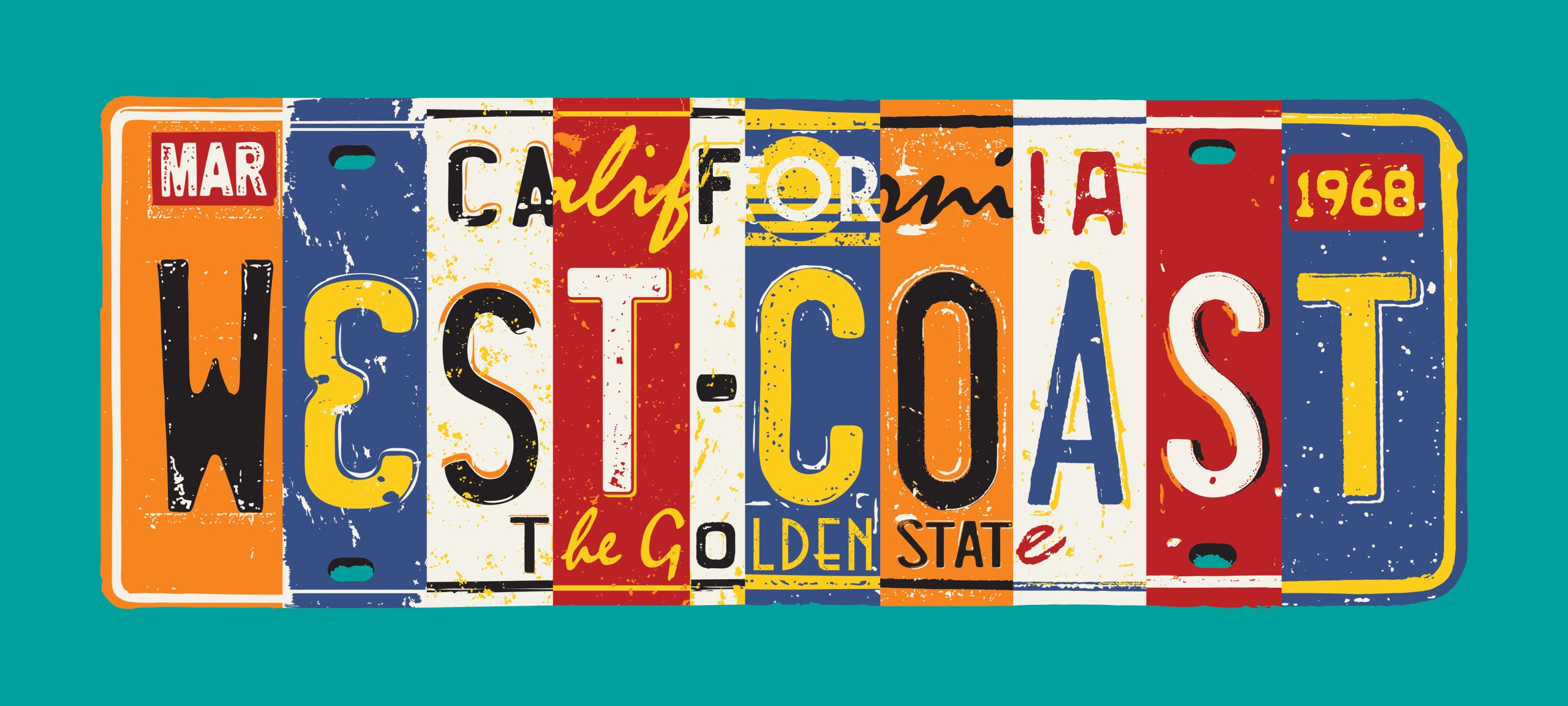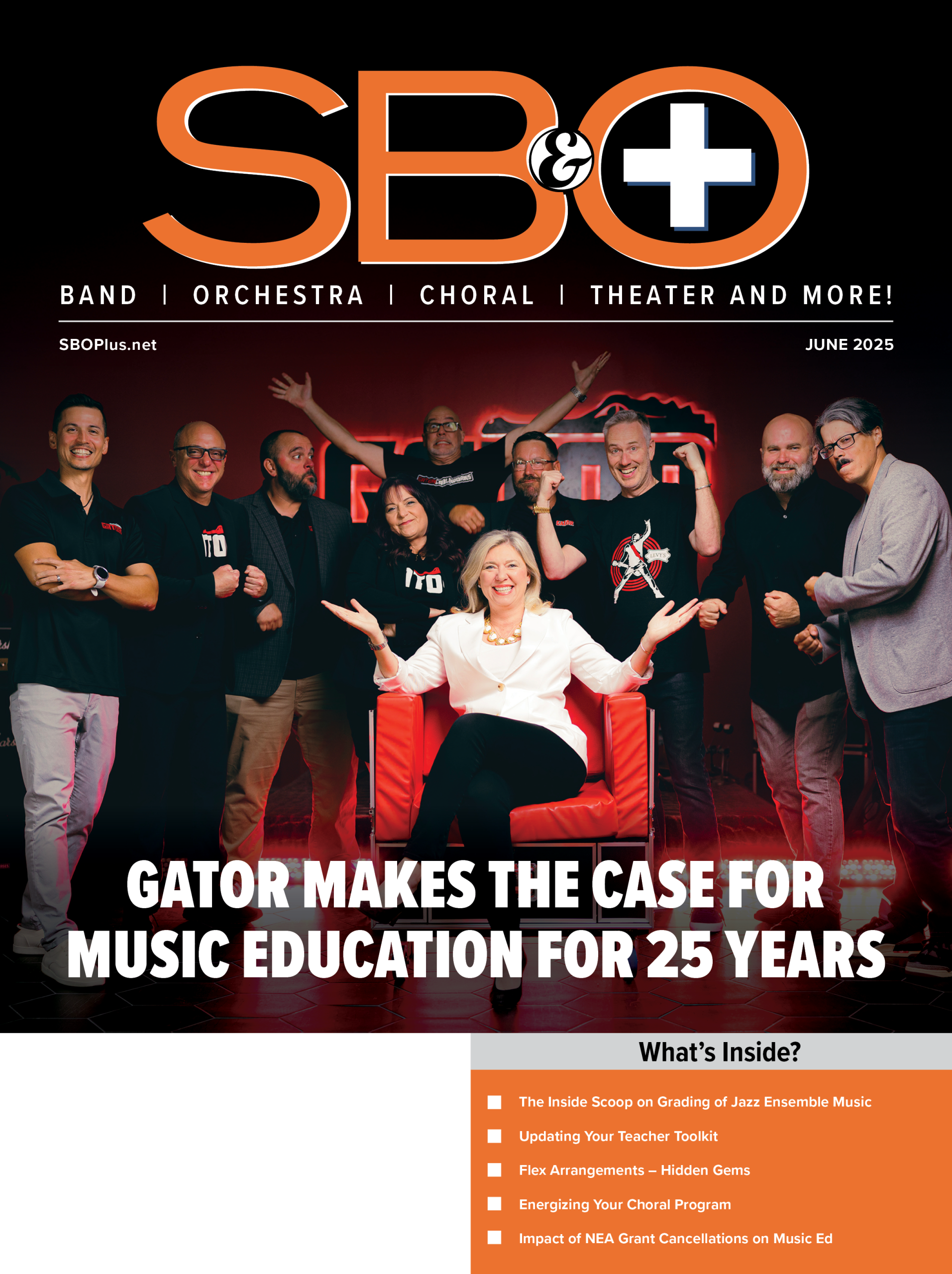Many times, in my career I have talked with piano players who couldn’t relate to the joint music making experience, since theirs was primarily practicing and playing as a soloist. Piano as a solo activity is often reinforced in collegiate keyboard classes, primarily working independently with headphones, never getting an ensemble experience while playing scales and drills. As keyboard classes in schools become cheaper and easier to offer through technological advances, there are a lot of ways to bring in new ways of thinking about how to make these courses more engaging and communal.
Reading traditional music on keyboard is a very important skill, but if that is the primary goal of early playing, it can be a barrier to learning student-centered songs that can be an immediate hook. Many familiar melodies and riffs can be played at the outset with simpler iconic notation. I recommend starting with letter + contour notation, simply the letters in a row, arranged with bar lines, placed vertically to denote going up or down in pitch. As the student gets comfortable, you can add full rhythmic notation underneath before eventually moving onto first a treble staff and finally a grand staff. This unlocks so many popular melodies they can easily play from day one
Speaking of simple melodies, I recommend learning a new “riff a day” to start off the class. When students walk in, they can see a new melody on the board and spend time trying to figure it out in whatever notation system you are working on. Riffs can get progressively more challenging as the semester moves on, incorporating more complex musical skills. Vocal melodies in the choruses of popular songs are a great source, since they are typically diatonic, don’t have a large range, and fit well in the hands while teaching scalar patterns. If using the letter/contour notation at the outset, the key doesn’t matter since you can introduce accidentals just as easily, and it will quickly reinforce the names of all the notes.
Similarly, many songs also can be learned with simple diatonic triads. While not ideal for voice-leading, jumping around with triads in C in root position makes it so you can play thousands of songs (and sing along!). As they grow comfortable with this shape, you can introduce inversions and then chords in other keys. Music Will uses jamcards (available free under public resources) to help with the transition to other keys, and once students are familiar with the shape of the cards, you can use them for reading chord sequences the same way a guitarist would read chord diagrams.
Finally, you can put it all together to make great ensemble arrangements. Take for example a song that features a distinctive keyboard part, simple melody, and is well-known by most students: Heathens by Twenty-One Pilots. Playing the melody alone is a great way to work on right hand fingerings as well as articulation (legato playing for the first two lines, interchanging long and short notes for the second two). The bass can be played simply as well, two half notes followed by a whole note, fairly simple for beginning students. Then there is the actual piano accompaniment, a comping pattern that alternates fingers and thumb over three chords. Once these three parts are learned, you can have the class play together, letting students choose which they want to play, still giving a very full sound. As they progress in skill, they might attempt to play two of the parts at once, adding the bass with the accompaniment or melody to start learning how to do separate parts with each hand
Assuming your class has keyboards instead of pianos, it’s a great opportunity to use the sound banks and make a full band sound. I know from experience that most students love to use these settings to play drums (or create chaos with the preset demos), so this is a way to channel their energy for good. Have them explore the sounds to find an appropriate sound for the bass of the song or an appropriate drum kit. Once they have found drums that mimic the timbre, listen and talk through what they are hearing…is it a rock kit with primarily bass drum, snare, and cymbal? Is it electronic and include trap hi-hats, whistles, and toms? Once they have their sounds set, you can work with them on playing the drum part on the keyboard to really make the sound of the song come through.
From here you can expand to songwriting and improvisation, having them work in small groups to create piano, melody, bass, and drum songs, and even get them singing. Since as we all know, the most famous popular keyboardists all sing along! These are just a few ideas for finding ways to have a great experience in your keyboard class that is engaging to your students and can get them playing songs they know and love from day one.
Scott Burstein is the director of professional development and higher education with the non-profit Music Will.































